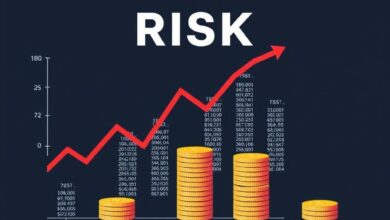Short-term vs long-term investing – what to choose?

Align your investment timeline with specific goals to maximize returns while managing risk. A well-structured portfolio reflects your desired outcomes, whether they involve rapid gains or a steady accumulation of wealth over time.
Shorter durations often appeal to those seeking quick profits, but they come with heightened volatility and risk exposure. Consider market conditions carefully; a strategy focused on swift transactions may yield impressive short-term results, yet it demands an ability to react promptly to fluctuations.
Conversely, extending the duration of your investments typically suits individuals aiming for long-term financial stability. This approach allows for compounding growth and mitigates the impact of market swings, fostering resilience in your portfolio. Balancing these strategies effectively requires a clear understanding of personal risk tolerance and financial aspirations.
Assessing Your Financial Goals
Clearly define your financial objectives before structuring your investment portfolio. Identify specific goals such as retirement savings, purchasing a home, or funding education. Each goal requires a different risk profile and timeline for achieving the desired return.
Your asset allocation should align with these ambitions. Higher returns often come with increased risk; thus, if you aim for substantial growth over several decades, consider incorporating more volatile assets into your portfolio. Conversely, for shorter timelines or lower risk tolerance, prioritize stability and security in investments.
A thorough assessment of your financial situation will guide you in selecting appropriate strategies that resonate with both your aspirations and risk appetite. Regularly review your progress against these goals to ensure alignment and make adjustments as necessary.
Understanding Risk Tolerance
Evaluate your risk tolerance by analyzing how much volatility you can handle without losing sleep. If short-term fluctuations in the market worry you, consider a more conservative approach. For those who can withstand significant ups and downs, a strategy focused on maximizing return over an extended duration may be appropriate.
Your timeline plays a critical role in this assessment. If your financial goals are set for the near future, prioritize stability over high returns. Conversely, if you have several years before needing access to your funds, embracing higher risk could yield substantial rewards.
Consider using a risk assessment questionnaire to quantify your comfort with various levels of risk. These tools often categorize investors into different profiles based on their responses. Knowing where you stand can help align your investments with your goals effectively.
Lastly, remember that risk tolerance is not static; it evolves with changes in personal circumstances and market conditions. Regularly reassess your position to ensure it reflects both your current situation and future aspirations.
Analyzing Market Trends
Focus on identifying prevailing market trends to align your investment strategy with your financial aspirations. Utilize technical analysis, which involves studying price movements and trading volumes, to forecast future behavior. This method allows you to pinpoint entry and exit points based on historical data.
Consider employing fundamental analysis as well; examine economic indicators, corporate earnings reports, and industry performance metrics. These elements can reveal the underlying health of potential investments and help project expected returns over varying durations.
Establish a clear timeline for your objectives. For instance, if you aim for rapid gains, analyze short-term patterns such as momentum shifts or breakout scenarios. Conversely, for extended horizons, assess macroeconomic conditions that could influence market cycles over several years.
Incorporate risk assessment into your trend analysis. Evaluate the volatility of assets in relation to your comfort level with potential losses. Understanding how different trends react under various economic conditions enhances your ability to balance risk against desired returns effectively.
Stay informed about global events that may impact markets significantly. Geopolitical developments, regulatory changes, or technological advancements can shift trends abruptly. Regularly review these factors to adapt your approach accordingly and ensure alignment with your financial goals.
Evaluating Investment Options
Prioritize clarity in your investment decisions by aligning options with your defined goals and acceptable risk levels. Assess each asset’s potential return relative to its risk profile. For instance, stocks generally offer higher returns but come with increased volatility, while bonds provide stability with lower yields.
Consider the timeline for achieving your financial aspirations. If a goal is short-term, prioritize liquid assets that can be accessed quickly without significant penalties or losses. Conversely, for long-term objectives, allocate resources to growth-oriented securities that may yield substantial returns over time despite potential short-term fluctuations.
Diversifying your portfolio is essential to mitigate risks associated with individual investments. A well-balanced mix of asset classes can enhance overall performance and reduce susceptibility to market downturns. Regularly reevaluate asset allocation as market conditions shift and personal circumstances evolve.
Stay informed about current market trends and economic indicators that could impact your chosen investments. This knowledge will enable you to make timely adjustments to your portfolio, ensuring it remains aligned with both your risk tolerance and financial objectives.
Balancing Portfolio Strategies
To optimize your portfolio, integrate both aggressive and conservative assets tailored to your risk tolerance and investment timeline.
- Diversification: Spread investments across various sectors and asset classes to mitigate potential losses. Consider including stocks, bonds, real estate, and alternative investments.
- Asset Allocation: Regularly adjust the distribution of assets based on performance. If a particular sector exceeds expectations, reallocate gains to maintain desired risk levels.
- Regular Rebalancing: Periodically review your portfolio to align with changing goals or market conditions. This helps in maintaining your targeted risk-return profile over time.
Your strategy should reflect specific objectives–short-term gains versus long-term wealth accumulation. Assess each investment’s expected return relative to its associated risk.
- Growth Assets: Prioritize high-return opportunities for aggressive growth but be mindful of volatility.
- Defensive Investments: Incorporate stable options that provide consistent returns during market downturns.
This balanced approach ensures resilience against market fluctuations while aiming for optimal returns aligned with your financial ambitions.







